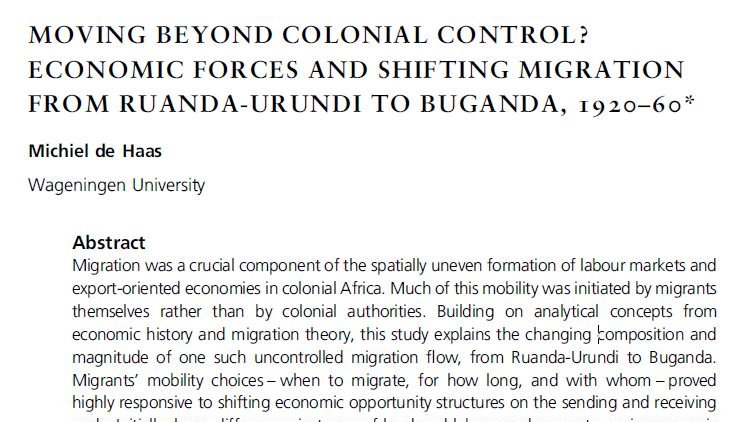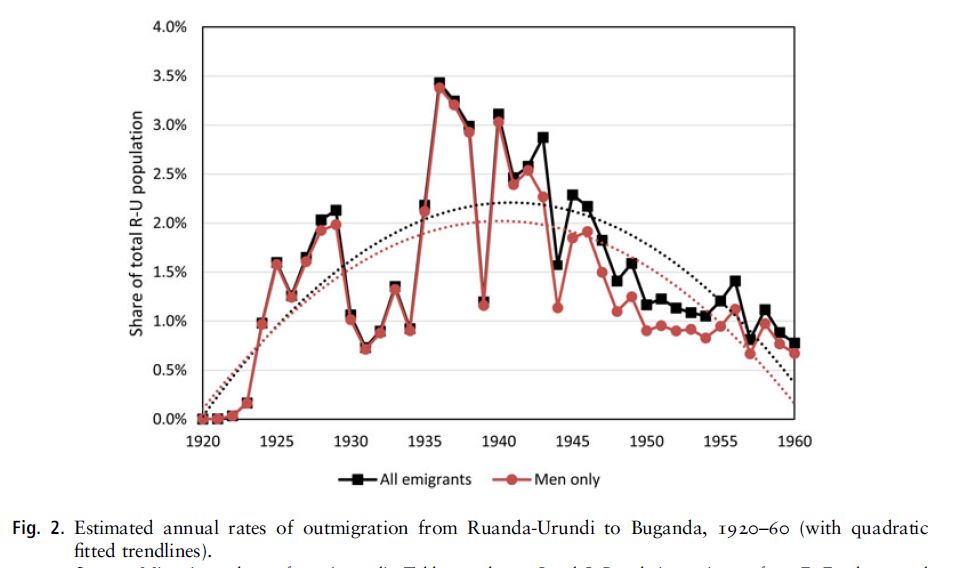/1 Proud to share my new paper in the Journal of African History @JAH_editors on the large scale migration from Rwanda and Burundi to Uganda during the colonial era: http://bit.ly/2P9Paal ">https://bit.ly/2P9Paal&q... Here are some key findings
/2 Between 1920s and 1960s, migrants from Belgian controlled Ruanda-Urundi moved in large numbers and on their own initiative to the cash crop producing countryside of Buganda, in the British Protectorate of Uganda. Neither colonial government grasped or controlled this mobility.
/3 Migrants proved highly responsive to uneven and shifting opportunities However, as markets integrated and wages and prices converged, the flow subsided. These dynamics provides a regional, historical example of a ‘migration transition’ as theorized by @heindehaas
/4 Buganda& #39;s native farmers& #39; ability to host/employ migrants was impressive: In a mere 40 years, Rwandans/Barundi came to make up ca. 25% of the host society (and all migrants 50%). Land scarcity and migrants& #39; reduced willingness to work for wages ultimately reduced hospitality.
/5 African economic historians @AfEconHis have viewed post-slavery labour market formation in Africa in the context of high land:labour ratios. But Ruanda-Urundi was by far the most densely territory in Africa, with profound impact on the region& #39;s wages and labour conditions.

 Read on Twitter
Read on Twitter



